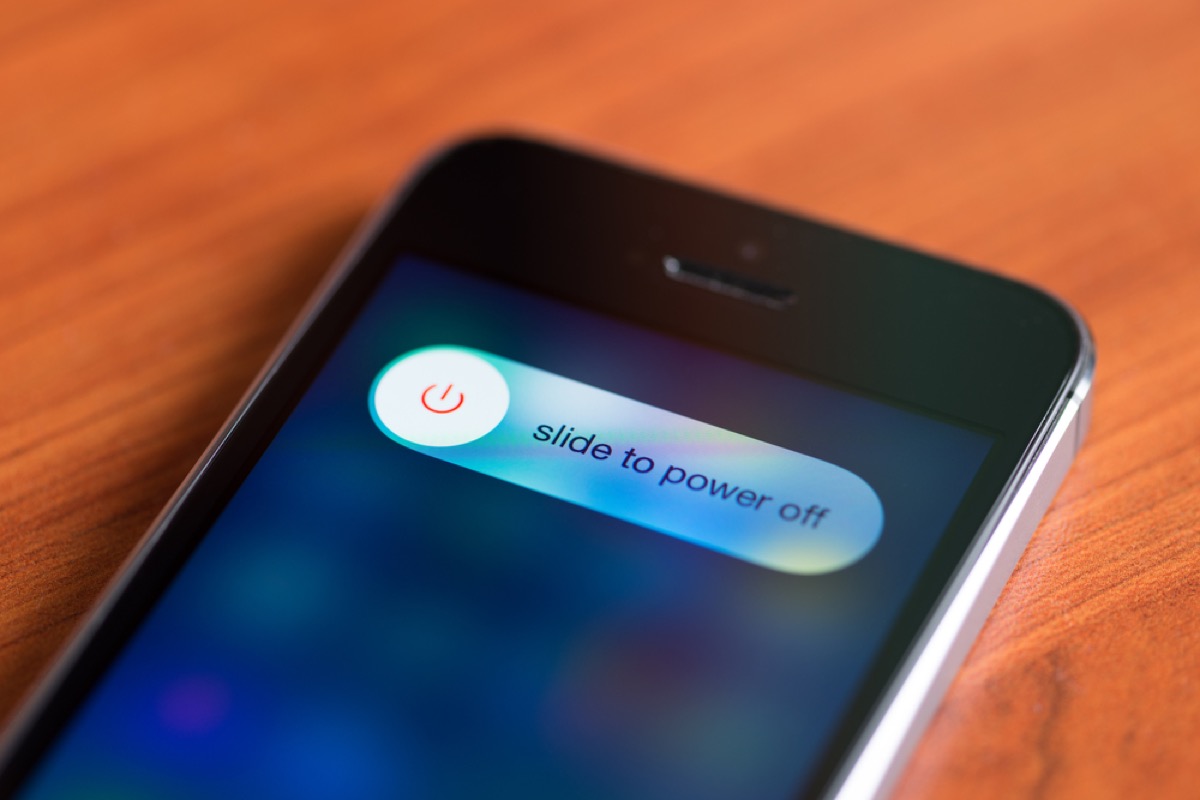My Entire Family Is Addicted to Screens. Here’s What I Did About It.

One Friday night, my husband and I and our two children curled up in the family room to watch a movie together. We prepared popcorn and everything, but poor Iron Man on the screen was getting no attention.
My husband was working on his latest creation in Minecraft. My 12-year-old daughter was playing another video game. And my 14-year-old son was watching a YouTube video, laughing so loudly at what he had stumbled upon that he decided to text it to us—yes, while we were all sitting in the room together.
The text alert interrupted my own social media scrolling, and shook me out of the moment long enough to finally realize we were a family of addicts. Screens had become our entertainment, our news source, our social lives, and, more recently and frighteningly, our way of communicating.
Things had to change and they had to change radically. So, I did what any modern parent would do: I went upstairs to our modem and I simply turned it off.
As extreme as it may sound, I knew it would work. My father-in-law was actually the inspiration. When my husband was growing up, his dad rewired a wall switch to the family’s television. Whenever he thought my husband and his brother were watching too much TV, he’d walk over to the switch and turn it off. He’d tell his sons there must have been a short in their old TV set, and they’d believe him. Everyone would leave the room and find a book or head outside instead.
I went back downstairs and, without screens to distract them, my husband and kids looked directly at me for what felt like the first time in weeks. I told everyone the internet was acting up and we’d have to play a board game instead. I pulled out a family favorite—Settlers of Catan—and hoped for the best. There was some grousing, some resentment, some complaining. But, within a few minutes, we were trading cards, trading stories, and, most importantly, trading screens for conversation. It was proof that sometimes, the old ways are the best ways.

Our nuclear family may have only been four, but we had 12 devices between us, meaning there were about three per person. It’s hard to say how we had gotten here. Maybe our collective addiction began when we stopped building Lego towers with our toddlers and instead handed them an iPad to do it digitally.
But our family’s dependency really became serious when both of our kids got their own digital devices. Our daughter was 8 and our son was 10 when they each got their Kindles, which I admit they used more for games than for reading. Then, at 11 and 13 years old respectively, our daughter got an iPod and our son got an iPhone. I think it was all downhill from there.
According to the RescueTime app—a smartphone application that monitors time spent on digital devices—the average person spends three hours and 15 minutes on their phone daily. We were well above average, that’s for sure.
After that fateful movie night, my husband and I decided to have a family meeting to talk about what needed to change. We wanted to include our kids in those decisions because we knew they needed to think more about turning on and tuning out for their own wellbeing, as tweens and teens. Initially, it didn’t go well. But, after a lot of discussion, some door slamming, and a bit of whining (that was from me, admittedly), we established a plan for getting back to a more balanced relationship with each other and with our screens.
We instituted screen-free days, meaning on Mondays through Thursdays, we would not watch television or play video games. That part wasn’t too difficult seeing as, on school nights, there wasn’t much time for downtime anyway.

As for Fridays through Sundays, everyone agreed to turn off their devices at 7 p.m. We removed apps and all social media from our smartphones. We downsized to just one television. We eliminated paid-for streaming services and we dropped our cable down to only the basic channels.
I’ll be honest, those first few days were not easy. We pretty much wandered around the house, unsure of what to do with our hands. My husband and I kept checking our phones only to find there was nothing there to entertain us (besides looking at our bank accounts or checking the weather).
My son sought refuge in his Xbox only to find my husband had hidden the remotes in a locked box. (Like father, like son, right?) Again, it might sound extreme, but my husband created the box not only for my son’s addiction, but for his own as well. He had to keep himself away from temptation, too.
Ultimately though, I was the one who found our new screen-free lives most challenging. I work from home most days on a laptop, and my smartphone acts as a conduit between my inbox and my clients. Putting down the phone and ignoring the notifications, buzzing noises, and pings of Facebook messages turned out to be more difficult than I had expected.
I decided to turn off my phone’s sound alerts, and eliminated most notifications. And, on the days when I’m really struggling, I’ll put my phone in another room entirely.

It’s been a few months now since we started this digital diet, and it’s going well. In fact, we aren’t just surviving without our screens, we’re thriving. I feel like I’ve got my concentration back. I picked up a book the other day and actually got through the first six chapters. My kids say they don’t miss Instagram or Twitter. In fact, they started talking to my husband and me more since we’re no longer two out-of-sync parents glued to our phones as well.
The other morning, my husband and I sat together over coffee before the kids woke up and talked for an hour. Talking to one another. Not texting, not commenting, but actually talking. Somehow, it sounds both novel and old-fashioned. Without our screens filtering our time together, we’ve all become closer and as a parent, that’s really all I could ever want. And for more on device dependency, check out 20 Signs You’re Addicted to Your Smartphone.
To discover more amazing secrets about living your best life, click here to follow us on Instagram!